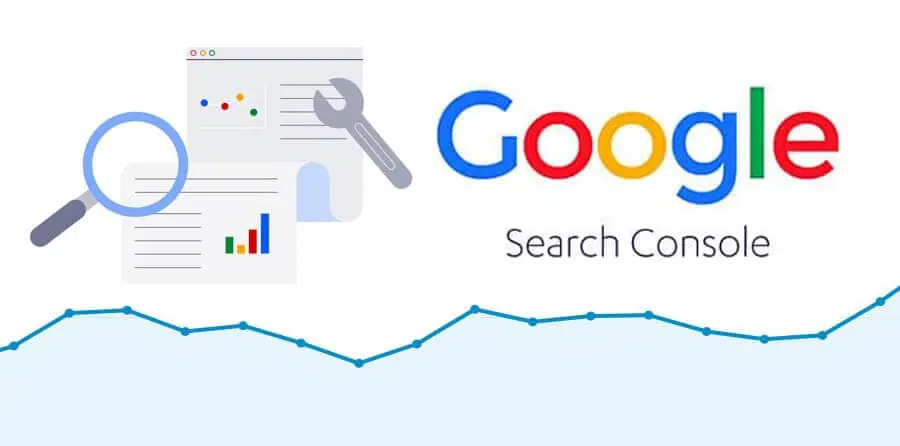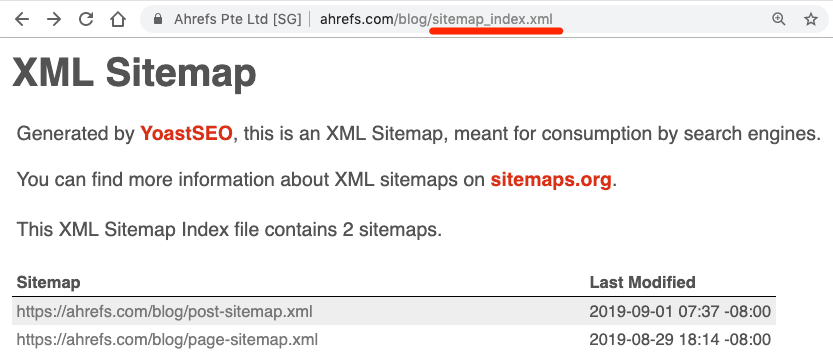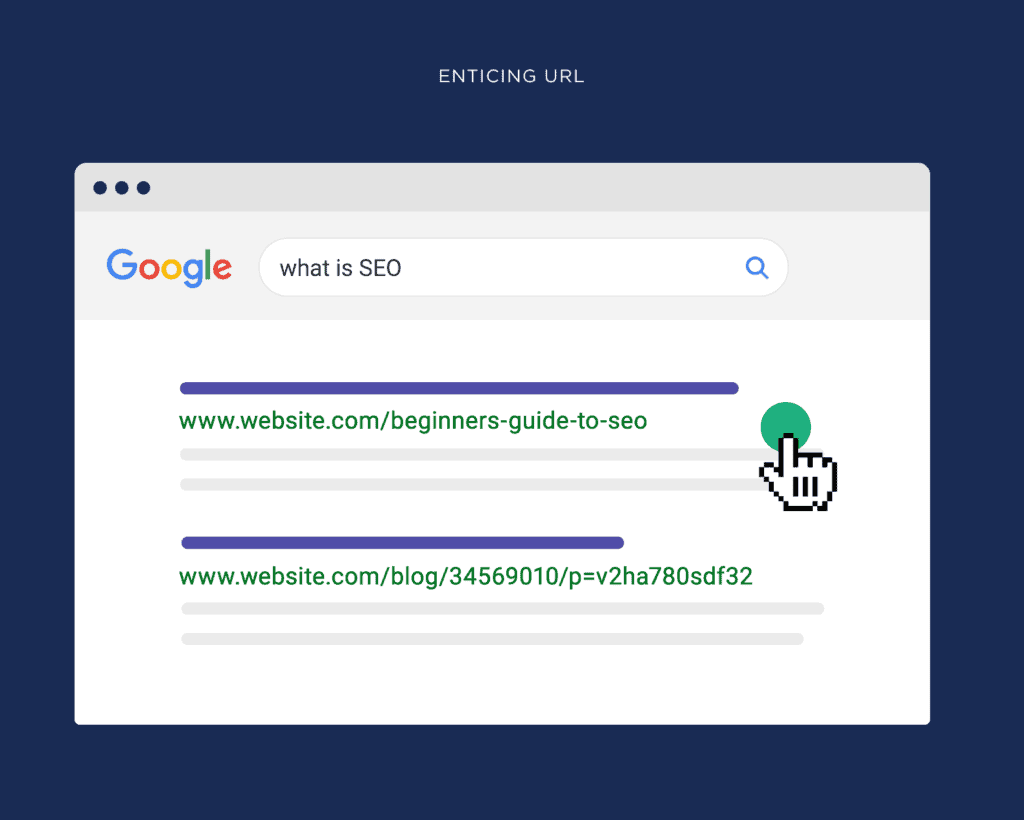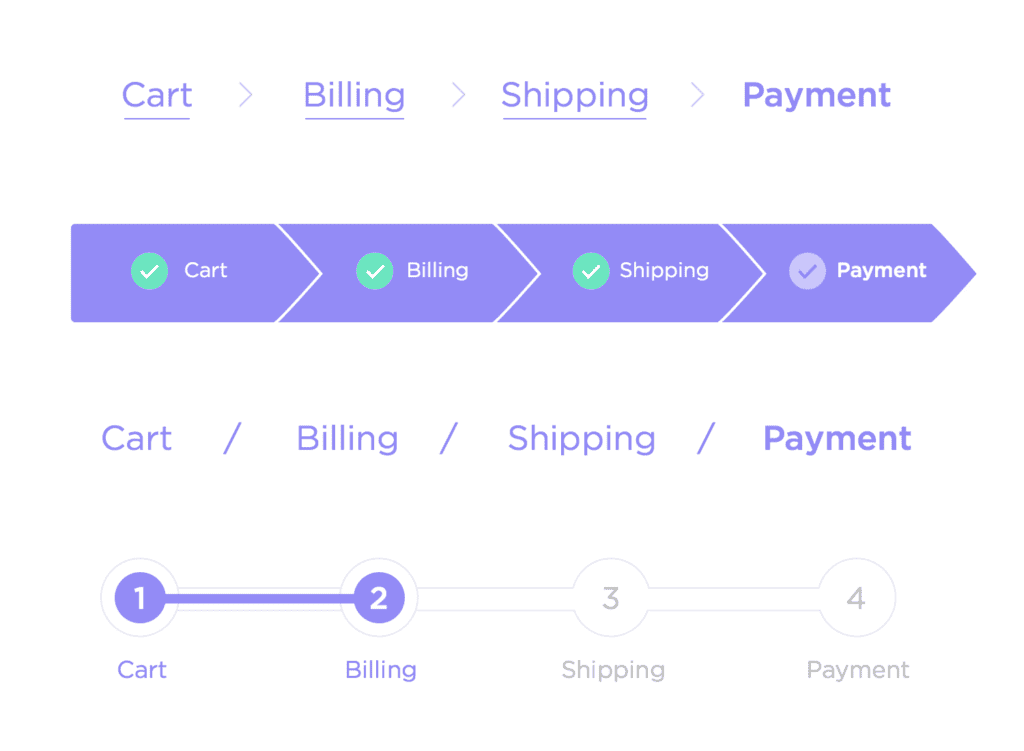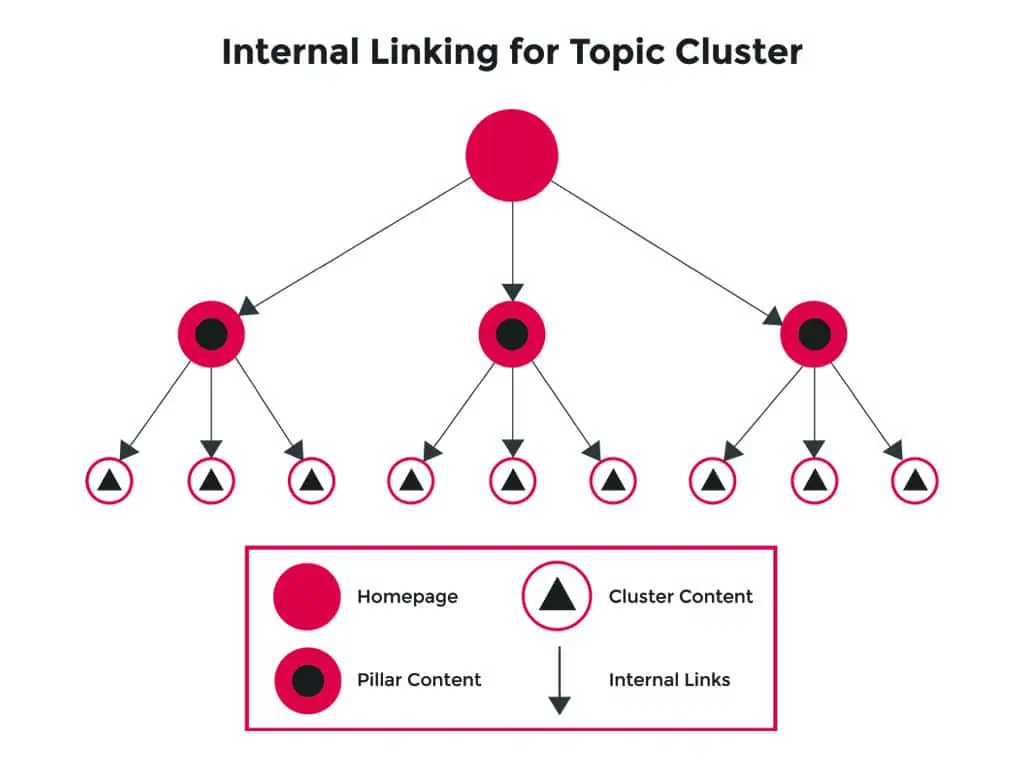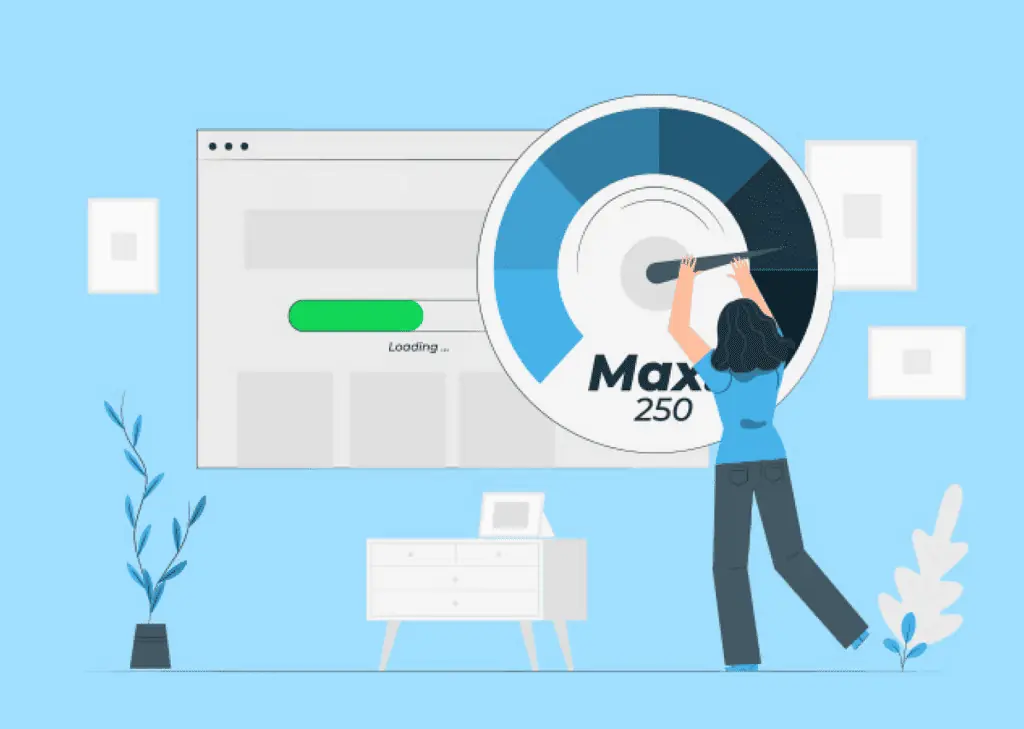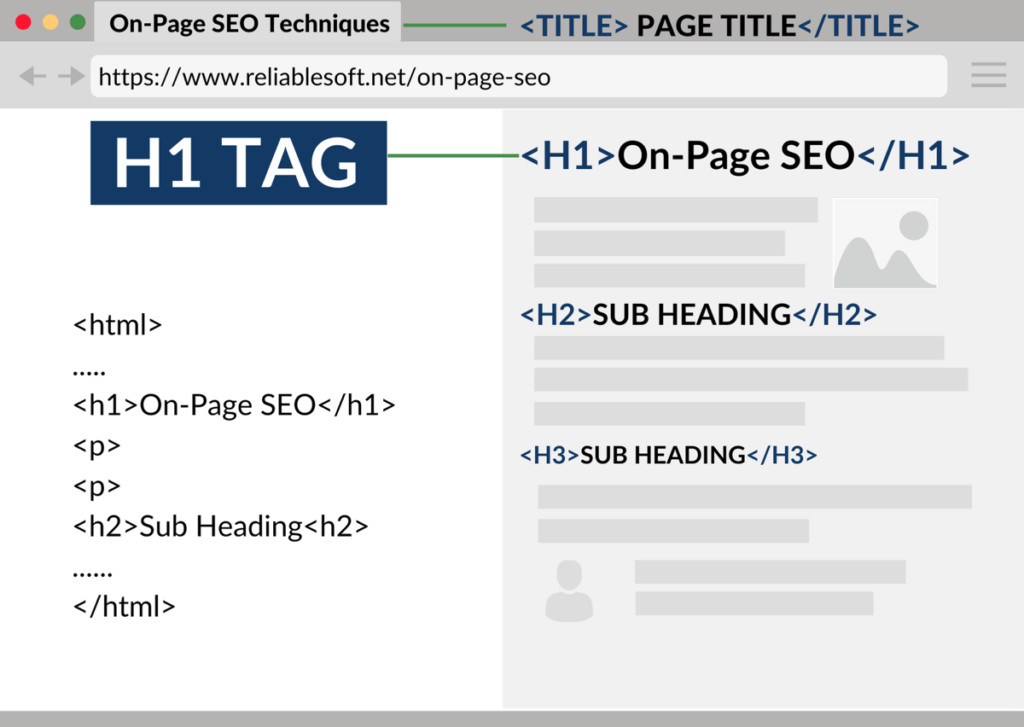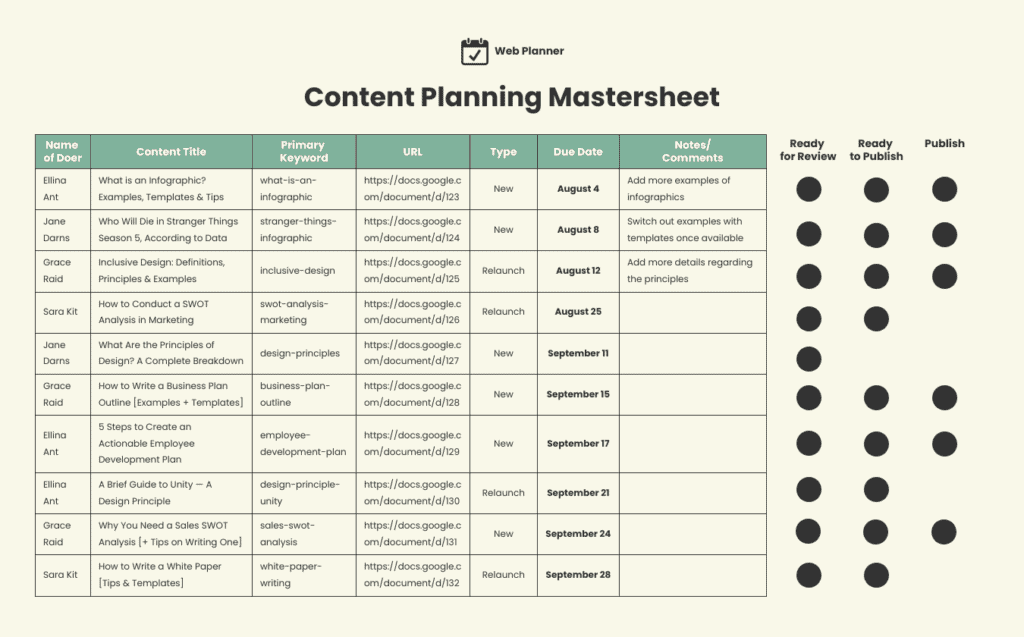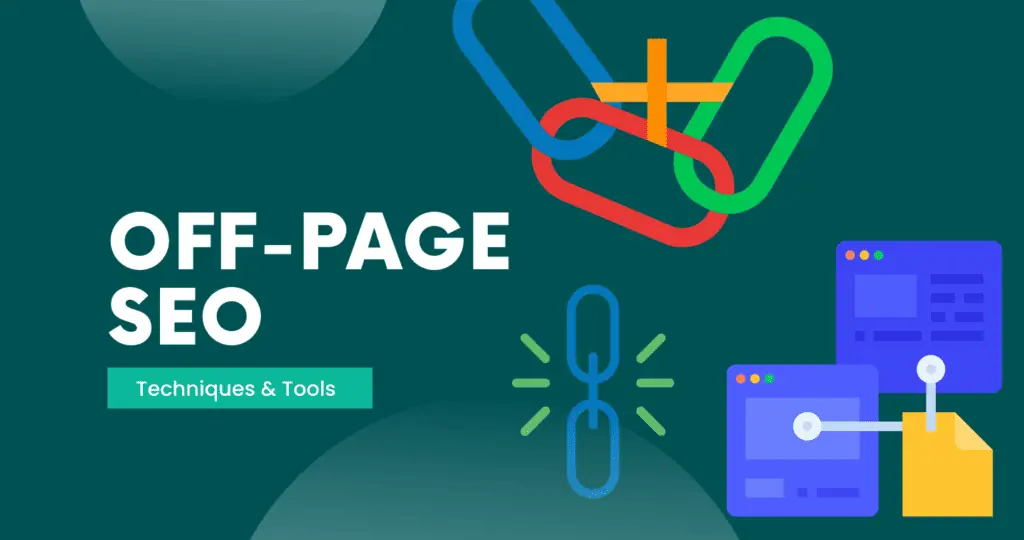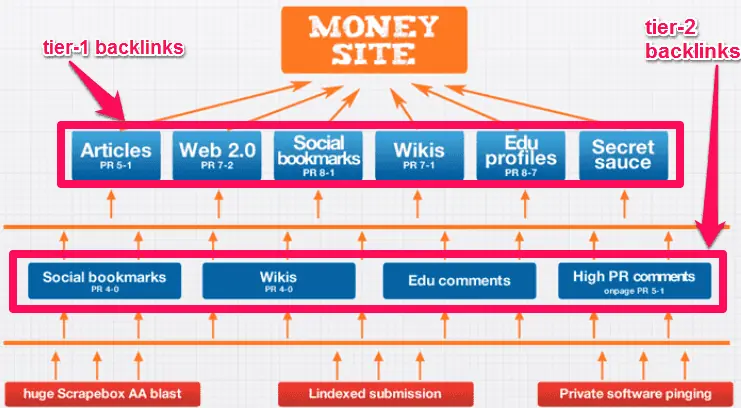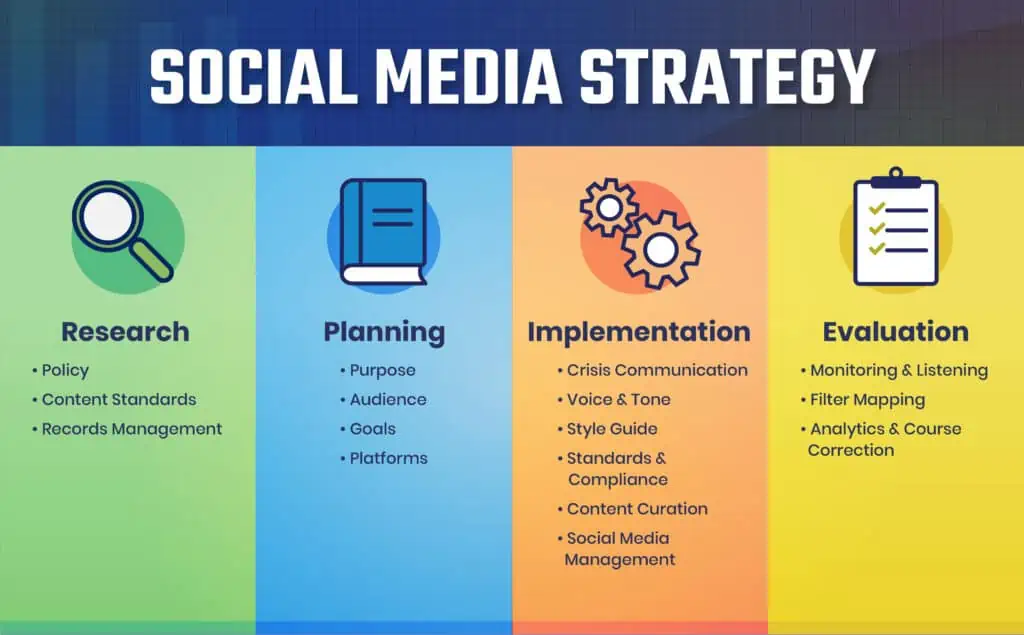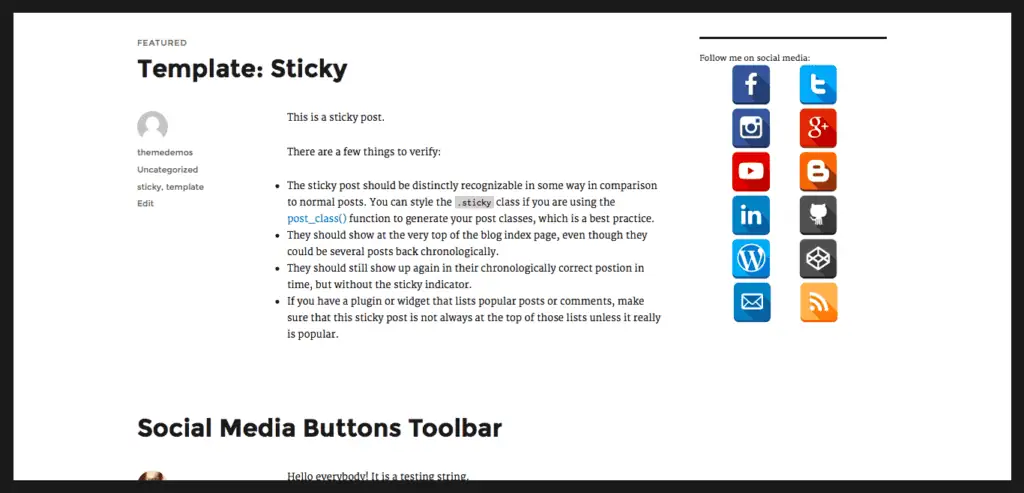Welcome to the world of digital success! Navigating the realm of search engine optimization (SEO) can be both exciting and challenging. But fret not! We’ve curated a comprehensive Search Optimization Service Checklist to ensure your website takes center stage in search results and captures the right audience. Often guarded as a prized secret by leading digital marketing agencies across the globe, today, we unveil it for you!
Whether you’re a seasoned digital marketer or a business owner striving to elevate your online footprint, this Search Optimization Service Checklist is your blueprint. It’s packed with actionable insights and essential checkpoints. Let’s immerse ourselves in the world of SEO and unlock the keys to triumph for your online endeavors.
1. Keyword Research
1.1 Analyze competitor keywords
Imagine you’re in a race, and you want to win. One smart way to increase your chances of winning is to take a close look at what your competitors are doing. In the world of websites and search engines, it’s a bit like that too.
Here’s the deal: when you’re trying to find the perfect keywords for your website, your competitors can be your best teachers. Why? Because if their websites show up at the top of search results, they must be doing something right!
So, when you do competitor research, you’re basically snooping around to see which keywords are already working like magic for them. These are the words and phrases that have helped them climb the search engine ladder. And guess what? These very keywords might just work wonders for your website too!
But how do you do this research? Well, you can use some nifty tools to help you spy on your competitors. There are tools like SEMrush, Ahrefs, and Google Keyword Planner that can give you the inside scoop on which keywords are driving traffic to their websites. It’s like having a secret treasure map to success!
So, next time you’re on a keyword hunt, remember that your competitors might hold the key to finding the best ones. It’s all about learning from the best to become the best in the world of search engines!
1.2 Compile A List Of Seed Keywords
Think of this list like a toolbox for your website. In this toolbox, you have special keywords that are like magic words. They do two important things:
- Describe Your Business: Just like a nametag tells people your name, these keywords tell search engines what your business, product, or service is all about. If you sell yummy cookies, your keywords might include “delicious cookies,” “homemade treats,” or “sweet dessert.”
- Boost Your Website’s Popularity: Imagine your website is a cool pop star, and each keyword is a fan screaming your name. The more fans you have (meaning more keywords relate to your business), the more popular you become in the online world. And when you’re popular, search engines like Google put you in the spotlight, showing your website higher up in search results (SERPs).
So, your “toolbox” is like having all the right tools to build a strong online presence. When you use these keywords cleverly in your website content, blog posts, or even in product descriptions, you’re basically shouting to search engines, “Hey, look at me, I’m awesome!” And that’s how you climb the ladder to success in the online world.
Remember, choosing the right “magic words” in your toolbox is like choosing the perfect ingredients for a recipe. You want them to blend well and make something amazing!
1.3 Organize the keywords from the ultimate list
Imagine you have a big box of colorful Lego bricks. Each Lego brick is like a special word that helps tell a story about your website. Now, let’s organize these bricks into cool structures!
Keyword Grouping is like Sorting Lego Bricks into Sets:

When you have a lot of Lego bricks, it’s easier to find what you need if you group them by color or shape, right? Keyword grouping is like sorting these bricks into sets. You’re putting similar words together based on what they mean. For example, all the red bricks go in one set, the blue ones in another, and so on.
Why is this Important?:
Now, let’s say you’re building a fantastic Lego castle, and you want it to be the best one ever! If you mix up all the bricks, your castle might look a bit messy and not as awesome. In the same way, if you use all your keywords randomly on different pages of your website, it can get confusing for search engines.
Avoiding Keyword Cannibalization – The Traffic Jam Solution:
Imagine if all the cars on the road wanted to go to the same ice cream shop. It would be chaos! Keyword cannibalization is a bit like that. It’s when too many pages on your website want to be the “cool ice cream shop” for the same keyword. This confuses search engines, and they don’t know which page to show in search results.
Keyword grouping helps you give each keyword a specific “ice cream shop” (a particular page). This way, you don’t have a traffic jam of pages fighting for the same keyword. It’s like giving each car its own lane to the right ice cream shop!
So, by organizing your Lego bricks into sets (keyword grouping), you’re not only making your Lego castle (website) look amazing, but you’re also avoiding the traffic jam (keyword cannibalization) and guiding visitors (and search engines) to the right place!
2. On-Page SEO
2.1 Goal Setting & Web Analytics Tool Installation
Imagine your website is like a busy beehive, and you’re the beekeeper. You want to know how many flowers your bees visit and how much honey they bring back. That’s where web analytics tools come in!
Web Analytics Tools – Your Bee Counter and Honey Tracker:
Some popular web analytics tools include Google Analytics, Hotjar, and Kissmetrics. We personally use PostHog for PlanTrips. Web analytics tools are like magical gadgets that count how many bees (visitors) come to your hive (website). They also watch how the bees buzz around (interact) – do they just peek in or do they stay longer, buzzing happily?
Why are Goals Important?:
Now, imagine you’re the beekeeper with a mission: to collect the most honey possible. To do this, you set goals – a specific number of flowers (user actions) you want each bee (visitor) to visit. It could be signing up (a registration), buying something (a transaction), or even sharing your honey recipe!
Goals – Your Flower Targets:
Goals are like your flower targets. You decide, “I want each bee to visit 5 flowers a day.” These goals guide your bees (visitors) and you (the beekeeper) to make sure everyone is doing their best to collect that sweet honey (achieve the targeted action).
Making Honey and Adjusting Your Recipe:
As a beekeeper, if you notice some bees aren’t reaching the flower target, you might change the location of the hive or plant more flowers. In the web world, if visitors aren’t meeting your goals, you adjust your website or marketing strategy. Maybe your flowers (website) need to look more attractive, or you need to spread the honey recipe (content) to more places.
So, web analytics tools help you count bees (visitors) and see if they’re collecting enough honey (reaching your goals). If not, it’s time to tweak the hive (website) or the flowers (goals) to get that honey flowing!
2.2 Google Search Console Setup
Imagine Google Search Console as your website’s best friend, helping you become the star of a talent show. It’s like the backstage pass that shows you how the judges (search engine) score your performance (website).
Your Website’s Talent Show Journey:
In this talent show, your website is the performer, and you want to be the crowd’s favorite. Google Search Console is the mirror that tells you how well you’re doing and how to rock the stage better!
Understanding Your Performance and Feedback:
The judges (search engine) watch your act and give feedback. Google Search Console is like the judge’s report card. It tells you, “Hey, your singing (website) was fantastic, but your dance moves (pages) need some polishing.”
Spotting Errors and Improving Performance:
Sometimes, while performing, you might trip on stage. GSC is the friend who whispers, “Hey, you stumbled there.” It spots errors (website issues) and tells you what parts of your act (website) need improvement.
Uncovering Hidden Gems and Blocks:
Imagine your act includes a magic trick, but your props (pages) are hidden or blocked. GSC is like the magic wand that reveals where your tricks (pages) are hidden and if they’re under a spell (blocked from being seen).
Data: Your Performance Guidebook:
The data GSC provides is like the guidebook for your performance journey. It tells you, “Fix this part of your act, and the crowd will cheer louder (better search performance).”
So, Google Search Console isn’t just about numbers; it’s your backstage buddy, helping you perfect your performance (website) and win the hearts of the talent show audience (search engine users)!
2.3 Build a logical site structure
Imagine your website is like a big library filled with exciting books. Now, just like a library, you need a clear and organized way to arrange your books so readers can find them easily. That’s where website structure comes in!
Your Website as a Library:
Picture your website as this amazing library, and each book is a different page or section of your website. You want readers (visitors) to easily find the books (pages) they’re interested in, right?
The Importance of a Clear Structure:
Website structure is like the library’s layout. Imagine if the library had no clear sections like ‘Fiction,’ ‘Mystery,’ or ‘Science Fiction.’ It would be chaos! The same goes for your website. A transparent and logical structure helps visitors and search engines understand where to find what they’re looking for.
Search Engines as Book Explorers:
Think of search engine bots as little book explorers. They navigate your library (website) using the structure to discover and read every book (page). If the structure is messy or confusing, these book explorers might miss some books, and that’s not good for your library’s popularity!
Creating a Clear Pathway:
A good website structure is like creating clear signboards and labels in a library. It guides both book explorers (search engines) and readers (visitors) on the best path to reach the books (pages) they desire.
Transparency is Key:
Transparency in website structure means making it easy for these book explorers (search engine bots) to scan your library (website). The clearer the paths, the more likely your books (pages) will be discovered and recommended to other readers (visitors).
So, remember, a well-structured website is like a well-organized library – easy to navigate, find what you need, and enjoy your reading (browsing) experience!
2.4 Use HTTPS
Picture the internet as a postman delivering letters between you and your friend. But sometimes, you need to send secret letters that nobody should read except your friend. That’s where HTTPS comes into play!
HTTP – the Open Letter:
HTTP is like writing an open letter. The postman can read it, anyone can see it, and that’s okay for some things. But what if you’re sending a secret recipe or your diary entries? You’d want those to be super private, right?
HTTPS – Sealing the Letter:
HTTPS is like putting your letter in a magic, invisible envelope that only your friend can open. It’s a fancy way of making sure nobody can peek at your letter while it’s on its way to your friend.
Why is this Super Important?:
Imagine your letter contains your secrets, like your favorite ice cream flavor (a visitor’s actions) or your secret hideout (contact details). You wouldn’t want anyone to know these! HTTPS ensures your secrets stay safe and hidden from prying eyes.
Google Likes the Magic Envelope:
Google, the internet referee, loves it when you use these magic envelopes (HTTPS). In fact, it’s so happy about it that it says, “Hey, these folks are keeping their letters safe, let’s boost their score!” This means having HTTPS gives your website a special gold star (higher ranking) in Google’s eyes.
HTTPS: The Trustworthy Stamp:
Imagine if you received a letter with a special stamp that said, “This is super secure!” You’d trust it more, right? That’s what HTTPS does for your website. It tells visitors, “We care about your privacy, your secrets are safe with us.”
So, next time you visit a website and see that magic HTTPS in the address bar, know that your secrets are safe, and Google thinks highly of that website too!
2.5 Pick Your Preferred Domain (www vs non-www)
Imagine you have two doors to your cool treehouse – one says “www.writeany.com” and the other just says “writeany.com.” Now, you want to make it clear to everyone, including the treehouse guards (search engines), which door is the main entrance to your awesome treehouse.
Why Premium Domain Names are Worth?
The Two Doors Dilemma:
Search engines are like the treehouse guards. They see these two doors and wonder, “Are these two different treehouses or just different doors to the same place?” You want to avoid confusing them because you don’t want them to think you have two separate treehouses (duplicate pages).
Choosing the Main Door:
Defining a preferred domain is like putting a big sign on one door saying, “This is the main entrance!” It helps the guards (search engines) know which door to use and understand that both doors lead to the same amazing treehouse (your website).
Why Does It Matter?:
Imagine if you had a treasure chest (your website’s content), and the guards (search engines) thought you had two chests with the same treasure! That’s not good. Defining a preferred domain helps avoid this confusion and ensures all the treasure (content) is accounted for in one chest (one version of your website).
Telling the Guards:
You tell the guards (by setting a preferred domain) which door to focus on. So, if they see the “www” door and the non-“www” door, they know to pay attention to just one and not both, preventing any confusion and duplication.
In the world of treehouses (websites), one main entrance is better than having confusing duplicate entrances. So, always tell the guards which door is the VIP entrance to your amazing treehouse (website)!
2.6 Setup A robot.txt File
Imagine you have a magical welcome mat at your door. This mat decides which guests (search engine robots) can come into your house (website) and which rooms (pages) they are allowed to enter.
The Magic Welcome Mat – Your Robots.txt File:
The robots.txt file is like this magical welcome mat. You can place it at your front door (website’s main directory) and customize it to give instructions to the guests (search engine robots).
Directing Your Guests – Allowing and Restricting Access:
Some rooms (pages) in your house (website) are private, like your secret treasure room (sensitive pages with personal data or internal info). You don’t want just any guest (search engine) to wander in there. The robots.txt file tells the guests, “Hey, stay out of this room!”
Why Does This Matter?
Imagine a guest (search engine robot) snooping around your private stuff (sensitive pages). Not good, right? You want to protect your secrets (sensitive data) and keep them safe from prying eyes. That’s why you use the magic welcome mat (robots.txt) to guide your guests (search engine robots) in the right direction.
How To Create One?
- For a guideline on how to create a robots.txt, read Google instructions. Create a robots.txt file and save it in the root of your domain.
- To test a site’s robots.txt file in Google Search Console go to Crawl -> Blocked URLs -> the tab Test robots.txt.
Creating Boundaries and Maintaining Privacy:
You wouldn’t want guests (search engine robots) barging into your bedroom (sensitive pages). Similarly, you use the robots.txt file to set boundaries and maintain privacy. It’s like saying, “Guests, feel free to explore the living room (public pages), but don’t go into the restricted areas (sensitive pages).”
So, the robots.txt file is your way of being a good host, guiding and directing your guests (search engine robots) through your house (website) while keeping certain rooms (sensitive pages) off-limits. It’s all about ensuring privacy and security in your online home!
2.7 Create An XML Sitemap
Imagine you’re the captain of a treasure ship sailing in uncharted waters. To make sure you find all the hidden treasures (pages) on various islands (your website), you need a treasure map (sitemap.xml) to guide you.
The Treasure Map – Your Sitemap.xml:
The sitemap.xml file is like your magical treasure map. It’s written in a special code (XML) that tells you where all the treasure chests (website pages) are hidden.
Mapping the Treasure Locations – URLs, Last Visits, and More:
This treasure map (sitemap.xml) not only shows where the treasure chests (pages) are but also when they were last visited and how important they are (update priority and frequency). It’s your ultimate tool to locate and track the treasures effectively. Once you create a sitemap you can submit it to Google Webmaster Tools (or Bing Webmaster Tools, depending on your preferred search engine). We often create XML sitemaps using SEO plugins like Yoast SEO (click for more ways).
Why is the Treasure Map Helpful?:
Imagine if you had no map and had to randomly explore islands (website) to find treasure (pages). It would take forever! The treasure map (sitemap.xml) speeds things up. It’s like a shortcut that guides you straight to the treasures, helping search engine sailors (robots) find and index your treasures (pages) faster.
Aiding the Treasure Hunt – Helping Search Engines Navigate:
Just like a good map helps sailors navigate the vast ocean, a well-structured sitemap.xml helps search engine sailors (robots) navigate and discover all the gems (pages) of your website. It ensures no treasure chest (page) is left undiscovered.
So, the sitemap.xml file is your ultimate treasure map, ensuring that search engine sailors (robots) find and index all the hidden treasures (pages) of your website quickly and efficiently.
2.8 Specify A Language Using The .hreflang Attribute
Imagine your website is like a big international library. People from different countries come to visit and read the books (pages) in their preferred language. The hreflang attribute is like a helpful sign that says, “Hey, this book is in your language!”
Books in Different Languages – Your Website in Various Languages:
Your website has many books (pages), but some are in English, some in Spanish, and some in French. You want to make sure that when someone visits the library, they can easily find the book in the language they speak.
The Helpful Language Signs – Hreflang Attribute:
The hreflang attribute is like the language signs you put on bookshelves. It says, “These books (pages) are in French,” or “These are in Spanish.” It guides readers (search engines) to the right section (language version) of the library (your website). Read this!
Finding the Right Book for Each Reader – Displaying the Correct URL:
Imagine a reader (searcher) wants a book (page) in French, but they’re shown a book in Spanish. That would be confusing! The hreflang attribute helps avoid this by telling the librarian (Google) to show the French book (page) to the French-speaking reader and the Spanish book (page) to the Spanish-speaking reader.
Why is this Important?:
You want to provide a great experience for all readers (searchers) visiting your library (website). The hreflang attribute ensures that each reader finds the right book (page) in their preferred language, making their visit enjoyable and productive.
In the vast library of the internet, the hreflang attribute is your language sign, making sure each visitor finds the book (page) they’re looking for in their language. It’s all about speaking the right language to the right reader!
2.9 Create SEO-friendly URLs
Imagine your website is like a big city, and each webpage is a house. Now, an SEO-friendly URL is like having a clear address for your house that anyone can understand easily.
The House Address – Your URL:
Your URL is like your house address. If it’s easy to read and makes sense, more people (both humans and robots) can find and visit your house (webpage). For example, “/how-to-create-good-url” is like a clear, simple address.
Speaking a Universal Language – Making URLs Understandable:
Imagine if your house address was in a secret code only a few people understood. That’s what a complicated URL with strange characters and numbers is like. An SEO-friendly URL speaks a universal language that everyone, including search engine robots, can understand. Read this!
The Language of Keywords – Adding Meaning to the Address:
Just like adding details to your address, having proper keywords in your URL gives more meaning. For instance, “/how-to-create-good-url” tells you what the house (webpage) is about. It’s like saying, “This is a guide on creating good URLs.”
Guiding the Visitors – Helping Search Engines Rank Your House Higher:
Now, imagine you’re a tour guide showing people around the city. If your directions (SEO-friendly URL) are clear and precise, more people will follow you. Search engine robots are like these tourists, and when they can easily follow your URL, they’re more likely to rank your house (webpage) higher.
An SEO-friendly URL is like having a welcoming, easy-to-read house address that ensures more visitors (both human and search engine) find and appreciate your house (webpage). It’s all about making sure your house is on the top of the list in the big city!
2.10 Utilize Breadcrumb
Imagine you’re on a big treasure hunt adventure inside a mysterious castle (website). As you move deeper into the castle, you leave a trail of magical breadcrumbs to guide you back and show others the path you took.
The Magical Breadcrumbs – Your Website’s Breadcrumbs:
Breadcrumbs on a website are like the magical breadcrumbs you leave in the castle. They’re tiny signs that tell you the path you’ve taken and help others follow your footsteps.
Finding Your Way in the Castle – Navigating the Website:
While exploring the castle (website), you might enter different rooms (pages). Breadcrumbs are like little signs on the floor that say, “You came from the Living Room (Homepage) to the Kitchen (Products) to the Secret Library (Specific Product).” Read this!
Guiding Others on the Adventure – Helping Users and Search Engines:
Let’s say a friend (user) joins your treasure hunt (website exploration). They can follow the breadcrumbs (website’s breadcrumb trail) and easily find their way back or continue the adventure. It’s like giving them a magical map.
Search engines, the castle mapmakers, also love these breadcrumbs. They use them to understand the castle’s layout (website structure) and show other adventurers (searchers) a sneak peek of the exciting places (page description) they can visit inside the castle (website).
Why Breadcrumbs Matter? – Keeping Everyone on Track:
Imagine the castle (website) is huge, and you’re lost in its maze. Breadcrumbs help you and others stay on the right path. They make sure no one gets lost and everyone enjoys the adventure (website exploration).
In this magical castle (website), breadcrumbs play a crucial role, leading you and fellow adventurers (users) on a delightful journey while helping the mapmakers (search engines) understand the castle’s secrets (website structure).
2.11 Enhance SEO With Internal Linking
Imagine your website is like a big amusement park. There are lots of rides (pages) to enjoy, and you want to make sure everyone has a great time and finds their way around easily.
Amusement Park Map – Your Website’s Structure:
Think of your website’s structure as a map of the amusement park. You want to make sure visitors (users) can quickly find all the exciting rides (pages) and attractions.
Guideposts and Pathways – Internal Links:
Internal links are like guideposts and pathways in the amusement park. They show visitors the way to various rides (pages) and attractions, making sure they never get lost. It’s like saying, “Hey, the rollercoaster (related page) is this way!”
Sharing the Fun – Spreading Link Weight:
Imagine you have a bunch of friends (pages) in the amusement park. When you share the fun with all your friends (internal links), it creates a fantastic atmosphere throughout the park. Similarly, internal links spread the link weight (importance) across your website, making every ride (page) equally exciting. Read this!
Improving the Fun Factor – Enhanced User Experience:
In an amusement park, the more exciting the rides and how easily you can get to them, the happier the visitors. Likewise, internal links ensure that visitors have a great time exploring your website. When they can easily hop from one ride (page) to another, they enjoy the adventure (website experience).
Earning Star Points – Enhancing Website Authority:
Now, let’s say visitors (users) enjoy a ride (page) so much that they give it a gold star. The more stars a ride gets, the more famous and exciting it becomes. Internal links work similarly. When a page gets more internal links, it earns “star points,” enhancing the website’s overall authority and popularity in the amusement park of the internet.
In this exciting amusement park of the internet, internal links are like the well-marked paths and signs that guide visitors, ensuring they have a fantastic time exploring and spreading the joy throughout the park.
2.12 Check HTTP Status Codes
Imagine you’re ordering pizza from your favorite restaurant. Now, after you place your order, you receive a message from the restaurant telling you the status of your pizza delivery.
Pizza Delivery Status – Your HTTP Status Code:
HTTP status codes are like those messages from the restaurant. They tell you if your order (webpage request) is being prepared, out for delivery, or if there’s an issue.
Three-Digit Pizza Code – Classifying the Message:
Just like the first digit in your pizza delivery status code might indicate if the pizza is being prepared or on its way, the first digit in an HTTP status code tells you if things are going smoothly (2xx), there’s a redirection (3xx), there’s a client error (4xx), or there’s a server error (5xx).
Checking Your Pizza – Regular Review of Status Codes:
Imagine if you never checked the messages from the restaurant. You wouldn’t know if your pizza was on its way or if there was an issue. Similarly, regularly reviewing HTTP status codes lets you know if all pages of your website are working as they should. You can check the status code of any page using this service: https://httpstatus.io/
Keeping the Pizza Fresh – Maintaining Website Performance:
Now, imagine if the pizza is cold when it arrives. That’s like encountering a wrong response code on a webpage. It’s not the delightful experience you expected. Search engines are like pizza critics. If they notice a lot of cold pizzas (wrong response codes) on your website, they might not rank your restaurant (website) as high.
Getting the Perfect Pizza – A Well-Functioning Website:
Just like you want the perfect pizza, you want a website that works perfectly. Checking and fixing response codes helps you serve the perfect experience to your website visitors and keeps the search engine pizza critics happy, ensuring you get a higher ranking in the pizza (search engine) listings!
In the pizza world of the internet, HTTP status codes are the messages that ensure your pizzas (webpages) are fresh, hot, and ready for delivery to your customers (website visitors).
2.13 Use Canonical URLs
Imagine you have a favorite recipe for the perfect sandwich. Now, you decide to write it down in two different notebooks because you love it so much. But, you want to make sure everyone knows that the original recipe is in your first notebook.
Recipe in Two Notebooks – Your Duplicate Content:
The sandwich recipe in both notebooks is like having the same information on two different pages on your website. Search engines might think, “Wait, which notebook is the original recipe?”
The “Original Recipe” Stamp – Rel=”canonical” Attribute:
The rel=”canonical” attribute is like placing a special stamp on the first notebook, saying, “Hey, the original recipe is here!” It tells the search engine, “This is the main, authoritative source for the recipe.”
Why is the Stamp Important? – Avoiding Confusion:
Imagine if someone made a different version of your sandwich recipe using the second notebook. It wouldn’t be the perfect sandwich you intended! Similarly, the rel=”canonical” attribute helps avoid confusion by making it clear which page is the original, preventing search engines from seeing multiple versions of the same content.
Serving the Perfect Sandwich – Enhancing SEO:
You want everyone to enjoy your perfect sandwich recipe as you intended. The rel=”canonical” attribute ensures search engines understand which page to show in search results, helping your main recipe (page) get the spotlight and the recognition it deserves (better SEO). Read this and this!
Cooking Up Success – Better Website Performance:
In the world of recipes (websites), having a clear “original recipe” (canonical page) stamp ensures you’re serving up success. It avoids confusion, enhances SEO, and makes sure your perfect sandwich recipe (content) is the star of the culinary show!
2.14 Validate The Markup Accuracy Of HTML Web Documents
Imagine you’re sending an invitation to a grand party. You want the invitation to be formal, clear, and without any mistakes, so your guests know exactly when and where the party is. Markup validity is like ensuring your invitation follows the right format and etiquette.
The Party Invitation – Your Website’s HTML Code:
Think of your website’s HTML code as the invitation to the party. It needs to be perfect, just like you’d want your invitation to be flawless.
Following the Invitation Etiquette – Markup Validity:
Markup validity is like following the etiquette for writing your party invitation. You want to make sure the date, time, and venue (HTML elements and structure) are clear and formatted correctly. If you follow the etiquette, your guests (search engines) will understand the details easily.
Errors on the Invitation – HTML Code Errors:
Imagine if your invitation had the wrong date or misspelled venue. It would confuse your guests and might even make them not want to come. Similarly, HTML code errors can confuse search engines and affect how they understand and rank your website. Read this!
Verify your HTML syntax for accurate display across browsers, faster page load speed, and improved search engine rankings. Use validator.w3.org to check markup validity.
The Grand Party – Website SERP Rankings:
Your website is like a grand party, and everyone (internet users) wants to attend the best ones. If your invitation (HTML code) is perfect, it makes your party (website) more appealing, and more guests (traffic) will attend, boosting your party’s reputation (SERP rankings).
Ensuring a Successful Party – Valid HTML Code:
Just like you’d double-check your invitation before sending it, ensuring markup validity means checking and fixing any errors in your HTML code. This way, you ensure a successful “party” with a higher chance of attracting more guests (visitors) and being the talk of the town (better SERP rankings).
2.15 Fix Broken Links
Imagine you’re exploring a beautiful garden, full of exciting paths to different parts of the garden. But suddenly, you come across a broken signpost that doesn’t tell you where to go. It’s frustrating, right? Broken links on a website are like those broken signposts.
Garden Exploration – Navigating the Website:
Your website is like this exciting garden, and the paths are the links that guide visitors to different parts (pages) of the garden. Visitors want a smooth and enjoyable exploration experience.
The Broken Signpost – Broken Links:
A broken link is like a broken signpost that misleads the visitors. Instead of guiding them to a beautiful part of the garden, it leaves them lost and frustrated.
Crawl errors in Google Search Console are displayed site-wide and per URL in the Index Coverage report and URL Inspection tool, respectively. The Broken Link Checker Chrome extension is another useful tool.
Examples of broken links include:
- Web page 404 error.
- Non-functional download link.
- Removal of a referenced article by the website admin.
- Closed or inactive website or blog.
Keeping the Garden Tidy – Providing a Good User Experience:
Just as a well-maintained garden attracts more visitors, a website without broken links ensures a pleasant experience for users. Broken links are like thorns in a garden; they discourage visitors from further exploring and enjoying the beauty of the website.
Garden Review – Search Engine Evaluation:
Now, let’s imagine a garden inspector (search engine robot) visits your garden. If they find many broken signposts (broken links), they’ll think, “This garden isn’t well-maintained.” Search engine robots work similarly. They see broken links as errors, indicating a lack of care for the garden (website). They might rank the website lower as a result.
Cultivating a Lush Garden – Maintaining a Quality Website:
Just as a gardener (website owner) ensures all signposts (links) are in perfect shape, website owners need to regularly check and fix broken links. This cultivates a lush, beautiful garden (high-quality website) that visitors and inspectors (search engines) appreciate.
In the garden of the internet, broken links are like broken signposts, marring the beauty of the garden. Keeping them well-maintained ensures a delightful experience for visitors and a higher rank in the garden competition (search engine rankings).
2.16 Mind The Number Of Outbound Links
Imagine you’re in a big library, and the librarian (search engine) is carefully watching how you use the books (links). They want to make sure you’re not causing a mess or disrupting the library’s peace. Using non-relevant links on your website is like making a mess in the library.
The Library of the Internet – Your Website:
Your website is like a part of this big, well-organized library. Each book (page) should have a purpose and relate to the library’s theme (content relevance).
Using the Right Books – Relevant Outbound Links:
Imagine you’re doing a project about oceans (your webpage’s topic). You’d want to use books (links) about marine life, right? Relevant outbound links are like using the right books for your project, enhancing the quality of your information.
Misplacing Books – Non-Relevant Outbound Links:
Now, imagine if, in your ocean project, you randomly included books about space travel. It wouldn’t make sense, right? Non-relevant outbound links are like misplacing books that have nothing to do with your project. It confuses the librarian (search engine) and other visitors (users).
The Messy Library – Penalizing for Non-Relevant Links:
If the librarian (search engine) sees you constantly misplacing books (using non-relevant links), they might think you’re causing a mess in the library. Similarly, search engines don’t like websites that misuse links and might penalize them by lowering their rank in the library (search engine rankings).
Keeping the Library Tidy – Using rel=”nofollow” for Justified Links:
Sometimes, you need to reference other books (websites) in your project (content). If you’re using a lot of these references, you can use a special marker (rel=”nofollow”) to tell the librarian (search engine) that these references are needed, but not for the project’s main points. This helps keep the library (website) tidy and organized.
In the library of the internet, using the right books (relevant links) and not causing a mess (avoiding non-relevant links) ensures you have a cozy spot where other visitors (users) enjoy spending time.
2.17 Boost The Load Speed
Imagine your website is like a cozy cafe, and your visitors are like customers looking for a great cup of coffee. Page load speed is like the speed at which your cafe serves that perfect cup of coffee.
The Coffee Experience – Your Website’s Page Load Speed:
Picture a customer coming into your cafe, eagerly waiting for their coffee. The quicker you serve it, the happier they’ll be. Similarly, the faster your website loads, the happier your visitors will be.
Serving Coffee Fast – Faster Page Load Speed:
Now, if you serve that cup of coffee super fast, your customer’s face lights up with joy. That’s how visitors feel when your website loads quickly – it’s an immediate positive impression. Read this!
A Slow Brew – Slow Page Load Speed:
Imagine if making the coffee took forever. The customer might get frustrated and leave. Likewise, if your website takes too long to load, visitors might get frustrated and leave before even experiencing what you have to offer.
The Happy Customer – Satisfied Visitor:
When you serve that perfect cup of coffee quickly, the customer is satisfied and might come back for more. Similarly, when your website loads fast, visitors are satisfied and more likely to come back for more content.
Coffee Review – PageSpeed Insights:
Just as you might ask customers how they liked their coffee, PageSpeed Insights tells you how fast your website serves its pages. It gives you tips to improve your page load speed, just like learning to brew a better cup of coffee for a delightful cafe experience.
In the cafe of the internet, serving that perfect cup of coffee (fast page load) is crucial to keep customers (visitors) happy and coming back for more.
2.18 Set Up A 404 Error Page
Imagine you’re in a massive library, exploring different sections filled with books (webpages). Sometimes, you might reach a section where a book you want to read isn’t there. The 404 status code is like a friendly librarian guiding you when a book is missing.
The Library Sections – Different Webpages:
Think of the internet as a gigantic library with many sections, each representing a webpage. You’re the explorer, moving from section to section, trying to find the right books (webpages).
A Missing Book – Non-Existing Webpage:
When you’re searching for a book (webpage) in a section and can’t find it, that’s like encountering a non-existing webpage. It’s like the book vanished from the library. Read this!
The Helpful Librarian – The 404 Status Code:
The 404 status code is like a friendly librarian. When you ask about the missing book, they apologize and give you directions to a specific room (customized 404 error page) where you can find similar books or get assistance.
Creating a Welcoming Room – Customized 404 Error Page:
Imagine if the room you were directed to was cold and unwelcoming. That would be frustrating! A customized 404 error page is like a warm, welcoming room with helpful suggestions or links to guide you to related content, ensuring you still have a good experience in the library (website).
Library Directory – Google’s Manual:
Just like a library has a directory to help you navigate, Google’s manual is like a directory for website owners. It guides them on how to create a welcoming room (customized 404 error page) so visitors don’t get frustrated when they can’t find a specific book (webpage).
In the vast library of the internet, encountering a missing book (non-existing webpage) isn’t a problem when you have a friendly librarian (404 status code) to guide you to a welcoming room (customized 404 error page) full of helpful recommendations.
2.19 Create A Local Business Listing On Google Maps
Imagine you’re in a bustling marketplace, and you’re looking for the best bakery nearby. You want to see which bakery is closest to you and offers the yummiest treats. Local search is like having a marketplace map showing you all the bakeries around you. Learn to create one!
The Marketplace – Your Area:
Imagine your area as a lively marketplace where you have various shops and services. You want to find the best options right there without traveling too far.
Finding the Best Bakery – Local Search:
When you search for “best bakery near me,” it’s like asking the market guide for the top bakeries in the area. You want the freshest bread and tastiest cakes available in your vicinity.
The Marketplace Map – Google Maps:
Google Maps acts like a magical marketplace map. It shows you all the bakeries (local businesses) around you, making it easy to choose where to go for that delicious pastry.
Listing Your Bakery – Registration Process:
Now, imagine you’re a bakery owner. To appear on this magical map, you need to tell the market guide (Google) about your bakery, what you offer, and where you are. This is the registration process, where you ensure your bakery is on the market map (Google Maps).
Serving Delicious Treats – Enhanced Visibility:
When you’re on the marketplace map (Google Maps), more hungry customers (local users) can find you easily. They see your bakery and think, “That’s the place I want to go for the best treats!”
In the lively marketplace of local searches, being on the map (Google Maps) ensures your bakery (business) is the go-to spot for delicious treats (products or services) for people in your area.
3. Mobile Optimization
Imagine you’re exploring a magical forest with different pathways. Some paths are wide and easy to walk on, while others are narrow and a bit tricky. The wide paths are like desktop websites, and the narrow paths are like websites on a mobile screen.
The Enchanted Forest – The Internet:
Think of the internet as this fascinating forest filled with hidden wonders (websites). People love exploring this forest to find amazing things.
Choosing the Right Path – Mobile Optimization:
Now, think of your journey through the forest on a small trail. You’d want the trail to be easy to navigate, right? Mobile optimization is like making the narrow paths in the forest wider and more comfortable to walk on. It ensures people have a pleasant journey, even on the smaller trails (mobile screens).
The Magic Potion – Responsive Design:
Responsive design is like a magic potion that helps the forest (website) transform based on the path you choose. Whether it’s a wide or narrow path (desktop or mobile screen), the forest adjusts and becomes easy to explore, providing an enjoyable adventure.
The Friendly Forest Guide – Google’s Guide for Developers:
Imagine having a friendly guide (Google’s guide for developers) who knows every secret of the forest (website development). They help you navigate the forest, making sure your journey is smooth and delightful, regardless of the path you take.
Reaping the Rewards – Better Rankings:
Just like finding hidden treasures in the forest is rewarding, having a website that’s easy to explore and enjoyable on both desktop and mobile devices is rewarding too. Google rewards these well-prepared paths (responsive design) with higher rankings, ensuring more explorers (users) discover the wonders of your forest (website).
In this magical forest of the internet, making sure every path (website) is comfortable to walk on, whether wide or narrow, ensures every explorer (user) has a fantastic journey.
4. Content Strategy
4.1 Write Unique Post/Page Titles
Imagine you’re hosting a fantastic dinner party, and you want to give your party a catchy name to attract all your friends. The title tag for a webpage is like that catchy party name. It’s what makes your party stand out and gets people excited to attend.
The Grand Dinner Party – Your Webpage:
Your webpage is like this amazing dinner party you’re hosting. You’ve put a lot of effort into making it special, and you want everyone to know about it.
The Party Name – Title Tag:
Now, think of the title tag as the name of your party. If you come up with a boring or unclear name, not many friends might want to come. But if you have a catchy, exciting name, everyone will be intrigued and eager to join. Read this!
Sending Invitations – Search Engine Understanding:
When you create a fantastic party name (title tag) and send out invitations (webpage to search engines), it’s like telling search engines what your party is all about. They use that party name (title tag) to decide if it’s the kind of party others would enjoy attending (display it in search results).
The Talk of the Town – SERP Ranking:
Imagine your party becomes the talk of the town, and everyone is buzzing about it. That’s like having a high SERP ranking. The better the party name (optimized title tag), the more people will talk about it (click on your webpage in search results).
Crafting the Perfect Party Name – Title Optimization:
To craft the perfect party name (title tag), you need to think about what makes your party special and why your friends (users) would want to attend. It’s about capturing the essence of your party (webpage content) in a few exciting words.
In the grand celebration of the internet, a captivating party name (well-optimized title tag) can make your party (webpage) the most talked-about event in town (SERP ranking).
4.2 Write A Unique Meta Description For Each Page/Post
Imagine you’re a chef preparing a special dish for your guests. The meta description is like the aroma that entices them to taste your creation. It’s that delightful whiff that makes them excited to take a bite.
The Chef’s Masterpiece – Your Web Page:
Your web page is like a masterpiece dish you’ve carefully crafted. It’s the culmination of your effort and expertise.
The Alluring Aroma – Meta Description:
Now, think of the meta description as the captivating aroma that fills the room. If it’s a pleasing aroma, it draws people in, making them curious about your dish. Read this!
Inviting Your Guests – Search Engine Users:
When users are searching for a delightful meal (relevant information), they first get a whiff of the aroma (meta description). If it’s enticing and relevant to their appetite (search intent), they’re more likely to take a seat at your table (click on your webpage).
Balancing the Ingredients – Meta Description Optimization:
Just like a good dish needs the right balance of ingredients, a well-optimized meta description needs a balance of keywords, clarity, and informativeness. It should showcase what your dish (web page) offers without overwhelming the guests (search engine users) with a strong aroma (keywords).
Presentation and Garnish – Meta Description Length and Branding:
The right presentation (meta description length of 160-230 characters) and a sprinkle of garnish (occasional brand name mention) can enhance the appeal of your dish (web page). It’s about making it visually appealing and recognizable.
In the culinary world of the internet, a well-crafted aroma (meta description) can lure guests (search engine users) to savor the flavors of your dish (web page).
4.3 Optimize Heading Tags
Imagine you’re organizing a bookshelf with various sections and subsections. Heading tags are like the labels and subtitles that guide you to find the right book in each section. They help you understand the theme and importance of each book.
The Bookshelf – Your Web Page:
Imagine your web page as a bookshelf, and each section on the shelf represents a part of your content.
Labels and Subtitles – Heading Tags:
Now, think of the heading tags as the labels and subtitles for each section. The main label (H1 tag) is like the title of a book that gives you a big picture of what that section is about. The subtitles (H2 and H3 tags) refine the content and guide you further.
Finding the Right Book – Keywords in H-Tags:
If you’re looking for a specific book on the bookshelf, you’d pay attention to the labels and subtitles. Similarly, search engines look at the heading tags to understand what your content is about and which parts are more important.
Placing Books on the Shelf – Keyword Distribution:
Just like you’d place more important books on eye-level shelves for easy access, you want to do the same with keywords. The more important a keyword is, the higher up the hierarchy of H-tags it should be. The H1 tag, being the most important, represents the main topic (title).
Keeping the Bookshelf Neat – Page Structure and Hierarchy:
Just as you wouldn’t want a messy bookshelf, you shouldn’t clutter your page with too many heading levels (H-tags). Keep it neat and organized with a clear hierarchy (H1 to H3) to guide both readers and search engines.
In the library of the internet, a well-structured bookshelf (page with appropriate heading tags and keyword distribution) ensures readers and librarians (search engines) can easily find and understand the books (content) you offer.
4.4 Use ALT Tags In Every Image
Imagine you’re a museum curator, and you’re responsible for describing each artwork for visitors, including those with visual impairments. The alt tag for an image is like the description you provide for each artwork, ensuring every visitor can appreciate the art in their own way.
The Art Gallery – Your Website:
Your website is like an art gallery, showcasing various artworks (images) to visitors.
Describing the Artworks – Alt Tags:
Now, think of the alt tags as the descriptions you provide for each artwork. Just like you’d describe a painting’s colors, mood, and subject, alt tags describe what’s in an image. Read this and this!
Guiding the Art Enthusiasts – Search Engines and Users:
When art enthusiasts (users and search engines) visit the gallery, they can’t physically see the artworks (images) at first. The descriptions (alt tags) help them understand the essence of each artwork.
Making Art Accessible – Screen Readers and Image Display Issues:
Imagine some visitors can’t see the paintings (images) or prefer reading descriptions. Alt tags cater to them, providing a detailed description when the painting isn’t visible (image display issues) or for those using assistive tools like screen readers.
Artwork Identification – Unique Alt Tags:
Just as each artwork needs a unique description, each image needs a unique alt tag. It’s like assigning a distinct name to each painting so visitors can differentiate and appreciate them individually.
Curating the Gallery – Keyword Optimization:
Imagine you want to emphasize a specific theme in your gallery. You’d use appropriate keywords in the artwork descriptions (alt tags). However, just like you wouldn’t stuff every painting’s description with the same words, you avoid keyword stuffing in alt tags.
In the artistic world of the internet, providing detailed and unique descriptions (alt tags) for each artwork (image) ensures every art enthusiast (user or search engine) can fully appreciate the gallery’s collection.
4.5 Content Optimization For Both Humans & Robots
Imagine you’re a tour guide leading a group through a magnificent forest. The content on your website is like the stories you share during the tour – unique, captivating, and helpful. Keywords are like specific landmarks, making it easier for your group to navigate through the forest.
The Enchanting Forest – Your Website:
Your website is like an enchanting forest, waiting to be explored by curious adventurers (users). Read this!
Captivating Stories – Unique and Useful Content:
Just like you’d share captivating stories with your group during the forest tour, your website shares unique and useful content with your visitors. It’s about engaging them with tales they’ve never heard before.
Navigating the Forest – Keywords in Content:
Now, think of keywords as special landmarks in this forest. When your adventurers (users) know where these landmarks are, they can navigate the forest more easily. However, just like you wouldn’t constantly point at the same landmark during the tour, you avoid keyword stuffing and use them naturally in your content.
A Tale for Every Stop – Unique Content for Every Page:
Every stop in the forest has a different story. Similarly, every page on your website should have a unique story (content) to tell. Duplicate stories (content) won’t excite your adventurers (users), and it might even make them lose interest.
Maintaining the Magic – Proofreading and Grammar:
As a tour guide, you’d want to speak clearly and without mistakes to maintain the magic of your stories. Similarly, proofreading and ensuring good grammar on your website keeps the magic alive for your visitors. They enjoy the journey more when it’s smooth and without interruptions.
In the magical forest of the internet, captivating stories (unique and useful content) with well-placed landmarks (keywords) and smooth narration (good grammar) ensure every adventurer (user) enjoys the exploration.
4.6 Create Fresh & Trendy Content
Imagine you’re a skilled chef preparing a special dish for your guests. Your website content is like a carefully crafted recipe, where each ingredient represents valuable information for your audience. Just like a chef caters to the preferences of their diners, your content should cater to the needs and tastes of your audience.
The Culinary Delight – Your Website Content:
Think of your website content as a sumptuous dish you’re preparing for your guests (audience). It’s a blend of carefully chosen ingredients (information) that make the dish delightful.
Selecting the Right Ingredients – Researching Your Product and Competitors:
Before you start cooking, you need to carefully select the ingredients (research your product and competitors). Borrow fresh ideas (trends) but also be ready to experiment. Just as a chef studies the qualities of each ingredient, understand your product and what sets it apart from competitors.
Seasoning to Perfection – Analyzing News and Events:
Seasoning (analyzing news and events) is essential for enhancing the flavors of your dish (content). Stay updated with the latest trends and events in your field to ensure your content is current and appealing to your audience.
Delighting the Palate – Creating Content for Audience Preferences:
Now, consider your audience’s taste buds (preferences). Know what they love and what they dislike. Create content that caters to their needs and intent, just as a chef tailors a dish to suit the preferences of their diners.
A Culinary Masterpiece – Using Google Trends to Understand Audience Trends:
Google Trends is like your secret spice cabinet. It helps you understand the trending flavors (topics) your audience loves. Just like a chef uses spices to enhance the dish, you can use trending topics to spice up your content and make it more appealing.
In the delightful kitchen of the internet, creating a captivating dish (website content) that caters to the tastes (preferences) of your guests (audience) ensures a memorable dining experience (user engagement).
4.7 Develop A Content Plan
Imagine you’re the captain of a ship embarking on a grand expedition. Your content plan is like a well-charted course, guiding your ship through the vast ocean of the internet. Each section of the plan is a vital aspect of the journey.
The Grand Expedition – Your Content Plan:
Think of your content plan as the map and itinerary for your expedition (content strategy). It’s what ensures your ship (website) navigates smoothly through uncharted waters.
Plotting the Course – Defining Content Channels and Priorities:
Just as a captain divides the journey into segments, you divide your content plan into sections (content channels). Each section represents a key aspect of your expedition – articles for SEO, blog posts, new landing pages, and more. Prioritize these channels based on their importance for the upcoming month.
Navigating the Waters – Topic Selection for Each Content Piece:
For each section of your journey (content channel), you need to choose destinations (topics) that align with your expedition’s goals. Just like a captain plans stops at different ports, you plan your content topics for each channel to attract and engage your audience.
Guiding the Crew – Task Distribution for Content Creation:
The crew (copywriters or AI writer tools like WriteAny) is crucial for a successful expedition. Distribute tasks (content creation) among them based on their skills and expertise. Just like each crew member has a specific role, your team members have roles in creating content for different channels.
Updating the Logbook – Regular Content Updates:
Regularly updating the logbook (content plan) is essential. As the expedition progresses, you need to adjust your course (content strategy) if needed. If you encounter uncharted islands (new opportunities), you might need to alter your course (content plan) to explore them.
In the vast ocean of the internet, a well-planned expedition (content plan) with defined channels, topics, and a skilled crew ensures a successful journey (engagement and visibility) for your ship (website).
4.8 Add A Blog To Your Website
Imagine you’re a storyteller in a bustling market square, surrounded by a diverse crowd. Your blog is like your stage, where you captivate the attention of passersby with fascinating tales and draw them into your world.
The Market Square – The Digital Space:
Think of the digital space as a lively market square, filled with people seeking interesting stories and valuable information.
The Storytelling Stage – Your Blog:
Your blog is your storytelling stage. It’s where you share engaging stories, insights, and valuable knowledge with the crowd.
Gathering the Crowd – Regular Content Updates:
Just as a compelling tale gathers a crowd, regular updates to your blog attract visitors. Fresh, captivating stories (content) keep the crowd coming back for more.
Weaving Intricate Tales – Including Keywords Naturally:
In your stories (blog posts), you naturally weave in words that catch the ears of the crowd (keywords). These words resonate, adding depth to your tales (content) and attracting those seeking similar tales.
Connecting Story Threads – Interlinking for Enhanced Experience:
As you narrate different stories, you find threads that connect them. Similarly, interlinking within your blog allows visitors to navigate and explore related stories, enhancing their experience.
Growing the Audience – Enhanced Backlink Profile and Brand Awareness:
Imagine the crowd spreading the word about your storytelling talent, attracting even more listeners. Similarly, a well-maintained blog attracts backlinks, boosting your brand’s reach and reputation.
In the vibrant market square of the internet, being a skilled storyteller (blogging) with regular updates, well-woven tales (content with keywords), and captivating interlinked narratives enhances your reputation and keeps the crowd (audience) engaged and eager for more.
5. Off-Page SEO
5.1 Improve Backlinks
Imagine you’re an architect designing an impressive structure. Your website is like the grand building, and backlinks are the sturdy pillars supporting it. Just as each pillar needs to be strong and well-placed, each backlink should be of high quality and relevant.
DFYweb provides white-hat link building service to improve your backlinks!
The Grand Building – Your Website:
Think of your website as a grand, towering building in the city, standing tall in the online landscape.
Sturdy Pillars – Quality Backlinks:
Now, visualize each backlink as a strong, supporting pillar. These pillars are crucial to keep your building (website) standing and prominent.
Choosing the Right Material – Quality Over Quantity:
Just as a wise architect chooses the best material for pillars, focus on the quality of backlinks rather than sheer quantity. High-quality, authoritative backlinks are like pillars made of the finest materials, ensuring the stability and reputation of your building (website).
Balancing the Structure – Dofollow and Nofollow Links:
Imagine your building needs a balance between solid and flexible pillars. Similarly, in your backlink profile, strike a balance between dofollow and nofollow links. Dofollow links pass link authority, while nofollow links provide a natural link profile. Maintaining this balance is key for a healthy backlink structure.
Inspecting the Pillars – Monitoring Anchor Texts and Errors:
Just as an architect inspects each pillar, monitor the anchor texts in your backlinks. Ensure they are relevant and diverse, representing different aspects of your building (website). Additionally, regularly check for broken links or errors in your backlinks, just as an architect would ensure each pillar is intact and error-free.
In the architectural wonderland of the internet, a well-structured building (website) with strong and thoughtfully placed pillars (high-quality backlinks) is sure to stand tall and garner admiration.
5.2 Analyze Competitors’ Backlink Profiles
Imagine you’re an ambitious athlete preparing for a high-stakes race. To win, you need to study and learn from the top athletes who have consistently achieved victory. In the world of SEO and link-building, your competitors are the seasoned athletes, and their backlink profiles are like their meticulously crafted training regimens.
The Grand Race – Ranking on SERPs:
Picture the race for the top spot on the SERPs as the grand competition. You’re determined to be the winner, securing that coveted first place.
Training with Champions – Analyzing Competitor Backlink Profiles:
Now, think of analyzing your competitors’ backlink profiles as training with champions. You’re observing what makes the winners successful in this race (search rankings).
The Athlete’s Training Regimen – Competitor’s Backlink Profile:
Each athlete (competitor) has a unique training regimen (backlink profile). Some have a disciplined routine with a variety of exercises (diverse backlinks), while others focus on specific drills (thematic backlinks).
Analyzing the Workout Routine – Backlink Attributes:
Just as an athlete scrutinizes the workout routine of a champion, you analyze your competitor’s backlink profile. You examine the number of workouts (links), the prestigious gyms they train at (authoritative websites), and the specific exercises they emphasize (thematic sites).
Understanding the Winning Formula – Insights from Competitor Analysis:
By delving into your competitor’s training regimen (backlink profile), you unravel the winning formula. You understand what types of workouts (backlinks) are crucial for success and which gyms (authoritative websites) they train at.
In the competitive arena of search rankings, studying your competitors’ training regimens (backlink profiles) provides valuable insights into what it takes to be a champion (rank high on SERPs).
5.3 Create A Link-Building Plan
Imagine your website as a beautiful, thriving house you’ve built in a bustling neighborhood. The links pointing to your website are like the pillars and support beams holding up your house. Just as a strong foundation is crucial for a sturdy home, a well-structured link-building strategy is essential for a robust online presence.
Your Digital Home – Your Website:
Think of your website as your digital home, a place where you showcase your offerings, engage with visitors, and make a lasting impression.
Pillars of Support – Backlinks:
Now, visualize each backlink as a sturdy pillar or support beam. These pillars provide strength and support to your digital home, ensuring it stands tall and can weather any storm.
Inspecting the Foundation – Analyzing Your Backlink Profile:
Just as a homeowner periodically inspects the foundation of their house for weaknesses, you need to assess your backlink profile. Look for weak spots:
- Do You Have Enough Pillars?: Check if you have enough supporting pillars (backlinks). Sometimes, you might need more to reinforce your digital home.
- Quality Over Quantity: Assess if you have too many pillars from unreliable sources. Just as you wouldn’t want shaky pillars in your home, avoid backlinks from untrustworthy websites.
- Balancing Act: Ensure you have the right mix of dofollow and nofollow links. This balance is like ensuring different types of support beams in your foundation.
- Seeking Authority: Identify if you lack pillars from authoritative sources. These are like pillars made of the strongest materials, providing the most support.
- Building Relationships: Find out if you lack pillars from thematically related websites. These are like pillars from neighboring houses, strengthening your connection to the community.
Blueprint for Strengthening – Developing a Link-Building Plan:
Just as a homeowner creates a blueprint to strengthen their home’s foundation, you need a link-building plan. Determine the number of additional pillars (links) you need, and where you should place them.
- Identifying Pillar Resources: Analyze your competitors’ homes (websites) and take note of the pillars (backlinks) they have. Consider websites with high trust scores (Majestic) and those related to your niche.
- Constructing Pillars: Think of catalogs, forums, and Q&A platforms as places to construct pillars. Create profiles and contribute valuable insights, adding links to your digital home.
- Shareable Content: Develop shareable content like infographics, videos, or stats. These are like beautiful decorations that can be placed on neighboring houses (websites), with links back to your home.
- Starting Construction: Begin building new pillars (inbound links) on websites that are receptive to your efforts. Just as some neighbors are more open to lending support, some websites are more link-friendly.
In the digital neighborhood of the internet, a well-thought-out link-building strategy strengthens the foundation of your digital home (website), ensuring it stands out and thrives.
DFY Backlinks: Unlock Your Website’s Potential! ????
5.4 Other Creative Ways To Build Links
A. Guest Blogging and Link Exchange:
Imagine you’re a chef, and you’ve been invited to cook at a popular, themed restaurant. This restaurant is renowned for its Italian cuisine. Your specialty is pasta. The restaurant has a great reputation (authority), but it’s specifically known for its pasta dishes (thematic relevance).
Guest blogging and link exchange are like bringing your pasta expertise to this restaurant. You prepare a delightful pasta dish (valuable content), seamlessly fitting in with the restaurant’s Italian theme (thematically relevant site).
This not only adds to the restaurant’s reputation (backlink), but also showcases your pasta-making skills to a whole new audience (increased website traffic).
Additional tip: Use a Link-in-bio page to add strong backlinks to your main site and social media accounts. Try Getabio.com!
B. Active Participation in Forums and Q&A Platforms:
Imagine you’re in a bustling marketplace where people gather to discuss various topics. You’re an expert in home gardening. People often come to this marketplace seeking advice on planting and nurturing different types of plants.
You actively engage in discussions (participating in forums and Q&A platforms) and provide valuable gardening tips and advice (contributing meaningful comments and answers). Your knowledge and helpfulness earn you respect and recognition in the marketplace (building authority).
As you provide guidance, you subtly mention the high-quality plant seeds you offer (mentioning your brand or linking to your website). This encourages interested individuals to visit your garden shop (increase in website traffic) to learn more and possibly make a purchase.
C. Leveraging Reviews on Platforms:
Think of your product or service as a delightful dish you’ve crafted. You invite food critics (users) to taste it and share their opinions. The critics write reviews (online reviews) about the flavors, presentation, and overall experience.
These reviews are then compiled in a renowned food critique magazine (popular review platforms). The more positive reviews you receive, the higher your dish is rated (better ranking and visibility). But, if there are concerns in the reviews, you address them like a caring chef would, making improvements and ensuring a better dining experience next time.
D. Optimizing Multimedia Content:
Imagine you’re an artist creating a masterpiece. You carefully choose your canvas, brushes, and colors (media type and platforms). Each stroke you make (optimize size, titles, and alt tags) adds depth and meaning to your artwork (multimedia content).
You display this artwork in renowned galleries (social media, multimedia platforms) where art enthusiasts (your target audience) gather. They appreciate and share your artwork, discussing its nuances and beauty (increased visibility and engagement). Soon, your artwork becomes well-known and admired, attracting more art lovers (website visitors).
E. Google Business Profile for Local Visibility:
Picture your business as a cozy, welcoming café situated in a vibrant neighborhood. People passing by, looking for a good place to grab a cup of coffee (local queries), spot your café on a map. The signboard outside your café is attractive and informative (Google Business Profile).
It tells them what delights they can expect inside. Intrigued, they enter the café, boosting your foot traffic (increased local search visibility). Word spreads, and soon your café becomes a popular spot for coffee lovers in the area.
6. Social Media Strategy
6.1 Learn The Social Signals Of Your Industry
Imagine you’re a conductor leading a vibrant orchestra. Your website is like the symphony you’re performing, and social media platforms are the stages where you share your music. Just as a conductor carefully selects pieces that resonate with the audience, your social media content should strike a chord with your target audience.
The Grand Performance – Your Website:
Visualize your website as a grand symphony, a masterpiece of content and information waiting to be heard by the world.
The Orchestra – Social Media Platforms:
Now, think of social media platforms as different stages where your orchestra (content) can perform. Each platform has its unique audience and ambiance.
Selecting the Melodies – Planning Content:
Just as a conductor selects melodies that resonate with the audience’s emotions, plan content that strikes a chord with your specific business segment. Consider their interests, needs, and preferences.
Studying Other Performances – Analyzing Competitor Activity:
Before taking the stage, study the performances of other orchestras (competitors) on social media:
- Choice of Instruments (Platforms): Identify which stages (social platforms) they use to perform.
- Frequency of Performances (Posting Frequency): Determine how often they take the stage (post content).
- Musical Choices (Content Types): Observe the type of music they play (content they share), whether it’s industry news, fun facts, or niche memes.
- Audience Applause (Engagement Metrics): Measure the applause (likes and shares) they receive and identify what type of music (content) resonates best with the audience.
- Encore Feedback (User Engagement): Learn how they interact with their audience (user feedback). Are they responsive and adaptable to feedback?
Tuning the Instruments – Leveraging Trend Data:
To ensure your music is in harmony with the times, use tools like Google Trends, Buzzsumo, or Social Animal to discover what’s currently trending on social media. Just as a conductor stays in tune with the latest musical trends, you stay in touch with current social trends.
In the symphonic world of social media, planning content that resonates with your target audience and learning from the performances of competitors ensures your orchestra (website) is heard by a captivated audience.
6.2 Create Viral Content
Imagine you’re a curator in a bustling art gallery. Your brand is like a mesmerizing artwork, and social media platforms are the vibrant gallery walls where you display your masterpiece. Influential accounts on various platforms are like art connoisseurs who appreciate and promote your work.
The Art Gallery – Social Media Platforms:
Picture social media platforms as different sections of an art gallery, each with its unique ambiance and audience.
The Masterpiece – Your Brand:
Now, visualize your brand as a breathtaking artwork, waiting to be discovered and admired by visitors to the gallery.
Inviting Art Connoisseurs – Influential Accounts:
Influential accounts are like art connoisseurs. They appreciate the beauty of your artwork (brand) and share it with a wider audience, drawing more visitors to the gallery.
Understanding the Art Lovers – Target Audience:
Just as a curator understands the preferences of art lovers, define your target audience and tailor your artwork (content) to captivate their hearts.
Displaying the Artwork – Crafting a Content Plan:
Plan your content like arranging pieces of art in an exhibition:
- Entertaining and Informative Mix: Offer a blend of entertaining and informative posts, appealing to different tastes just like showcasing diverse artworks.
- Multimedia Showcase: Display videos, infographics, charts, and more. Each piece of art is unique, and so should be your content.
- Interactive Exhibits: Create interactive experiences like sweepstakes, quizzes, and contests, inviting visitors (subscribers) to engage with your masterpiece (brand).
- Art Critique and Improvements: Analyze audience feedback and activity. Just as an artist reflects on critiques, use the feedback to improve your masterpiece.
- Engaging in Artful Conversations: Actively participate in discussions, seeking opinions, and valuing each visitor’s perspective—this is akin to engaging with art enthusiasts.
Evolving Artistry – Experimentation and Growth:
Art evolves, and so should your content strategy. Experiment with different styles, mediums, and themes to keep your masterpiece fresh and captivating.
In the artistic realm of social media, collaborating with influencers and curating your masterpiece (content) for a discerning audience ensures your artwork is not just admired but celebrated.
6.3 Add Social Media Buttons To Website
Imagine you’re hosting a grand gathering in a vibrant city. Your website is like the venue where the event takes place, and social media buttons are like the bridges connecting your venue to the lively city, allowing attendees to quickly invite friends and spread the excitement.
The Grand Gathering – Your Website:
Think of your website as the venue for an exciting event, filled with engaging content and valuable information.
The Lively City – Social Media Platforms:
Visualize social media platforms as a lively city where people gather and share their experiences.
Building Bridges – Social Media Buttons:
Now, envision social media buttons as the bridges that connect your venue (website) to the lively city (social platforms). They enable attendees (visitors) to swiftly invite friends (share content) and spread the excitement (information) about the event (your brand).
Choosing the Right Routes – Selecting Social Networks:
Just as a host chooses the best routes to popular areas in the city, decide which social networks are most important for your business. Facebook, Twitter, Instagram, LinkedIn – choose the ones that align with your brand’s objectives and target audience.
Laying the Pathways – Adding Social Media Buttons:
Place these bridges (social media buttons) strategically – in the header, sidebar, or footer of your venue (website). You can build these bridges manually or use plugins for popular venues (CMSs) like WordPress, Joomla, and more.
Encouraging Interaction – A Flourishing Cityscape:
Imagine your venue’s success reflected in a bustling cityscape. Similarly, as visitors use these bridges (social media buttons) to share your event (website content), your brand gains visibility, attracting more attendees (traffic and engagement).
In the dynamic cityscape of the internet, social media buttons are the essential bridges that swiftly connect your venue (website) to the bustling city (social platforms), ensuring your event (content) is widely shared and celebrated.
6.4 Use Open Graph Protocol
Imagine you’re preparing a beautifully wrapped gift. Your website’s content is the precious gift inside, and Open Graph is like the wrapping paper and ribbon. It ensures that when you share this gift with others, it looks appealing and enticing, inviting them to unwrap it.
The Precious Gift – Your Website Content:
Think of your website’s content as a valuable gift you want to share with the world. It’s filled with information, stories, and knowledge.
Preparing the Presentation – Open Graph Tags:
Open Graph tags are like the wrapping paper, ribbon, and bow you use to present your gift. These tags structure the information about your content, making it visually appealing when shared on social media.
The Gift’s Exterior – Open Graph Meta Tags:
Visualize Open Graph meta tags as the elements that adorn the exterior of your gift:
- “og:locale”: It’s like a label that indicates the language of your gift.
- “og:type”: This tag specifies the type of your gift – whether it’s an article, video, news, or something else.
- “og:title”: This is akin to the title on the gift tag, defining what the gift is all about.
- “og:description”: Think of this tag as a brief description of your gift, offering a glimpse of what’s inside.
- “og:url”: It’s like the address where your gift can be found.
- “og:image”: This tag is the image that adorns the gift, making it visually appealing.
- “og:site_name”: It’s the name of the shop (your website) where the gift comes from.
Presenting to the World – Sharing Your Gift:
When you share your gift (website content) on social media, these beautifully wrapped Open Graph tags ensure that your post looks inviting, with an attractive title, description, image, and link.
Troubleshooting – Facebook Sharing Debugger:
If your gift doesn’t look as appealing as it should when shared on Facebook, the Facebook Sharing Debugger is like your trusty detective. It helps you pinpoint the problem, ensuring that your beautifully wrapped gift gets the attention it deserves.
In the world of sharing content on social media, Open Graph is your gift-wrapping tool, ensuring that when you present your valuable content to others, it’s irresistible and captivating.
Conclusion
- Get Your Dream Done For You Websites! ????
- Done For You Affiliate Websites: Unleash Your Potential ????
In conclusion, this comprehensive SEO checklist is a foundational tool for you to enhance your online visibility and ensuring a successful digital presence.
By meticulously addressing various aspects such as on-page optimization, technical SEO, content strategy, backlink analysis, and user experience, you can significantly improve your website’s performance on search engines.




